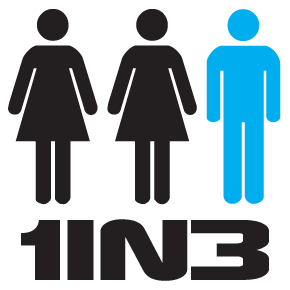Federal funding 'misused' by White Ribbon Campaign
A coalition of domestic violence researchers, counsellors, psychologists and men's health workers has asked the Minister for Women Kate Ellis to investigate the possible misuse of Federal anti-violence funding by the White Ribbon Foundation.
The Foundation has been allocated $1 million over 4 years to help their White Ribbon Ambassadors work in regional, rural and remote communities - particularly in high schools - to influence the change of attitudes and behaviours that perpetuate violence against women in Australian society.
The Ambassadors have been sent a resource document by the Foundation titled "What about the men? White Ribbon, men and violence" containing numerous serious statistical errors and unreferenced claims about gender and violence which downplay the incidence and impacts of violence upon men and boys. (A complete and fully referenced three-page list of the errors can be found at bit.ly/wrd10).
Among the many errors circulated in the document are claims such as:
men are less likely than women to experience violence within family and other relationships
we don't yet know the impact of violence on men's overall health
there is no evidence that male victims are less likely to report domestic violence than are female victims.
"Rigorous research by the Australian Bureau of Statistics, the Australian Institute of Health and Welfare, and the South Australian Department of Human Services has clearly debunked these dangerous myths," said Greg Andresen from Men's Health Australia.
"We now know that Australian men and women are equally likely to be physically assaulted by persons known to them; that the contribution of violence to the burden of disease in men is approximately 2.5 times higher than in women; and that women are almost three times as likely as men to report being a victim of domestic violence to the police."
Domestic violence counsellor and researcher Toni McLean said, "We are concerned that the Federally funded White Ribbon Ambassadors could be misleading the general public about the nature and dynamics of interpersonal violence in Australia."
"We are fully supportive of all attempts to reduce violence against women. However it is essential that a high-profile organisation such as the White Ribbon Foundation provides its Ambassadors and the general public with an accurate picture of violence in Australian society, especially when in receipt of Federal funding. If the White Ribbon Ambassadors are presenting the public with dangerous myths, their violence-prevention strategies are bound to be less effective, and could potentially cause harm - especially to children."
Psychologist and author Dr Elizabeth Celi said, "It isn't necessary for the White Ribbon Foundation to report incorrectly about male victims of violence in order to highlight the tragedy of female victims of violence. The horrific statistics about violence against women speak for themselves. The Australian Government has a responsibility to care for both male and female victims of violence - caring for one gender should not mean neglecting the other."
This is not the first time the White Ribbon Foundation has been caught using incorrect and misleading statistics. In 2008 the Foundation released An Assault on our Future: the impact of violence on young people and their relationships. This report was responsible for creating news headlines across the country exclaiming "Boys think it's OK to hit girls!" when the actual data showed that 25% of young people agreed with the statement "when a girl hits a guy it's not really a big deal."
Mr Andresen and his colleagues have written to the Chair and Board of the White Ribbon Foundation, as well as the Minister for Women Ms Ellis, but are yet to receive a response.
Media contacts:
Greg Andresen, Researcher, Men's Health Australia (NSW), media@menshealthaustralia.net / 0403 813 925
Toni McLean, Domestic Violence Counsellor & Ph.D researcher (NSW), info@thinktwiceprogram.net / 0409 599 887
Sue Price, Director, Men's Rights Agency (QLD), admin@mensrights.com.au / 07 3805 5611
Dr Elizabeth Celi, Psychologist & Author (VIC), info@qualityliving.com.au / 0413 338 237
Micheal Woods, Adjunct Fellow, University of Western Sydney (NSW), m.woods@uws.edu.au / 0414 710 696
Greg Millan, Director, Men's Health Services (NSW), greg@menshealthservices.com.au / 0417 772 390

